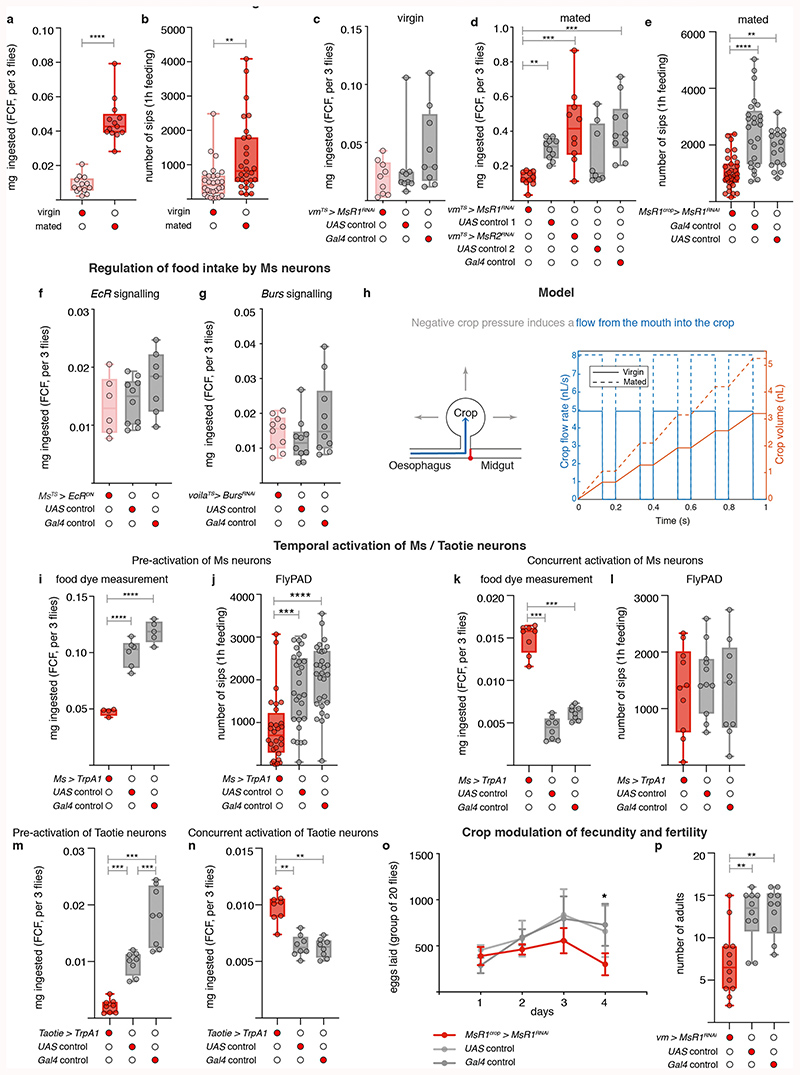Extended Data Fig. 10. Regulation of food intake, fecundity and fertility by Ms neurons.
a-b, Mated females increase their food intake. Both the amount of ingested dye-laced food (a) and the number of sips per fly (b) are increased in wild-type mated females relative to virgins. c-e, Regulation of food intake by MsR1 expression in crop muscles. Quantifications of ingested dye show that downregulation of MsR1 in the visceral muscles of starved-refed virgin females resulted in similar food intake relative to UAS and Gal4 controls (c), whereas downregulation of MsR1, but not MsR2, in mated females, resulted in reduced food intake, relative to UAS and Gal4 controls (d). e, Quantification of the number of sips per fly show that downregulation of MsR1 specifically in crop muscles using an independent driver line also reduced food intake relative to Gal4 and UAS controls in starved-refed mated females. f, Quantifications of ingested dye-laced food show that downregulation of EcR in Ms neurons of starved-refed virgin females does not significantly affect food intake when compared to Gal4 and UAS controls. g, Similarly, quantifications of ingested dye-laced food show that downregulation of Burs in Pros-expressing enteroendocrine cells of starved-refed virgin females does not significantly affect food intake when compared to Gal4 and UAS controls (g). h, In the model, food ingression from the oesophagus is driven by crop enlargement, which is assumed to be linear during sips and constant in between sips. The observed increase in food intake in mated females compared to virgins can be explained by a decrease in negative pressure from -0.8 kPa to -1.3 kPa (increased suction), leading to an increased intake during sips. See Source Data for crop morphometry and FlyPad quantifications used for this crop fluid dynamics model. i-j, Thermogenic activation of Ms neurons (Ms > TrpA1) for 4h prior to the transfer of flies from undyed to dye-laced food reduces the mean amount of ingested dye during the course of 1h (i), and reduces the mean number of sips per fly over 1h of feeding (j) relative to Gal4 and UAS controls. k-l, Concurrent thermogenic activation of Ms neurons during feeding of dye-laced food increases the mean amount of ingested dye during the course of 1h (k), but has no effect on the mean number of sips per fly over 1h of feeding (l’) relative to Gal4 and UAS controls. m-n, Effect of neuronal activation on the regulation of food intake by Taotie-Gal4-positive neurons. Quantification of ingested dye-laced food shows that thermogenic activation of Taotie neurons for 4h prior to the switch from undyed to dye-laced food reduced the amount of ingested dye relative to Gal4 and UAS controls over the course of 1h (m). By contrast, concurrent activation during feeding of such food increases the amount of ingested dye relative to Gal4 and UAS controls over the course of 1h (n). o, p, Effect of Ms signalling to crop muscles on fecundity and fertility. o, Quantification of eggs layed in 24h by mated females shows that MsR1 downregulation specifically in crop muscles resulted in significantly fewer eggs layed after 4 days relative to UAS and Gal4 controls. p, Quantification of adult progeny produced from a 24h period of egg laying by mated females, shows that MsR1 downregulation in visceral muscles resulted in significantly fewer progeny relative to UAS and Gal4 controls. Sip number measurements were done over 1h of feeding. See Supplementary Information for a list of full genotypes, sample sizes and conditions. In all boxplots, line: median; box: 75th-25th percentiles; whiskers: minimum and maximum. All data points are shown. *: 0.05>p>0.01; **: 0.01>p>0.001; ***: p<0.001.

